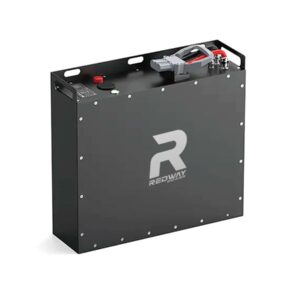What are the three tests performed on a battery?
Three essential battery tests include capacity testing (measuring stored energy), internal resistance testing (assessing efficiency losses), and cycle life testing (determining charge-discharge durability). These evaluations ensure performance reliability—capacity tests use constant current discharge, resistance tests apply AC/DC methods, and cycle tests simulate aging. Advanced labs also conduct safety tests (e.g., thermal runaway checks) and impedance spectroscopy for degradation analysis.
How to Maximize Forklift Battery Lifespan
What is battery capacity testing?

Capacity testing quantifies a battery’s energy storage using controlled discharge at specified currents (e.g., 0.5C). Results in ampere-hours (Ah) validate if the battery meets rated specs. Pro Tip: Test at 20–25°C for accuracy—temperature swings ±10°C can skew results by 5–15%.
Capacity testing involves fully charging the battery, then discharging it at a constant current while measuring time until voltage cutoff. For lithium-ion, a 1C discharge from 4.2V to 2.5V is standard. Why does temperature matter? Lithium-ion kinetics slow in cold, reducing usable capacity. For example, a 100Ah battery at -20°C might deliver only 60Ah. Always use calibrated equipment—a 1% current error can cause 3% capacity miscalculations. Transitional tip: Beyond basic discharge, advanced labs use hybrid pulse power characterization (HPPC) for dynamic load analysis.
| Method | Precision | Use Case |
|---|---|---|
| Constant Current | ±2% | Manufacturing QC |
| HPPC | ±5% | EV performance modeling |
How is internal resistance measured?
Internal resistance (IR) identifies energy loss from cell components, measured via AC impedance or DC load methods. High IR (>30% above spec) signals aging or defects. Pro Tip: Test at 50% SoC—fully charged batteries show 10–15% lower IR.
Using a four-terminal Kelvin setup eliminates lead resistance errors. AC methods apply a 1kHz signal, measuring voltage response. DC methods use brief load pulses (e.g., 10A for 10ms). But how do you interpret results? A 5mΩ increase in a 100mΩ LiFePO4 cell indicates 20% capacity fade. For lead-acid, IR doubles near end-of-life. Transitional note: While IR is critical, it doesn’t capture all failure modes—combine with capacity tests. Example: A 200Ah AGM battery with 8mΩ IR drops to 160Ah if IR hits 12mΩ.
Why is cycle life testing critical?
Cycle life testing predicts longevity by repeating charge-discharge until capacity hits 80% of initial. Lithium-ion typically endures 2,000–6,000 cycles at 80% DoD. Pro Tip: Avoid 100% DoD—reducing to 50% DoD triples cycle life.
Tests follow IEC 61960 standards, using defined charge/discharge rates (C/2 common). A 18650 cell cycled at 25°C with 100% DoD might last 500 cycles, but 50% DoD extends it to 1,500. What accelerates aging? High temperatures (>40°C) and fast charging (>1C). Transitional insight: Real-world usage isn’t linear—simulating variable loads (e.g., EV acceleration) gives more accurate lifespan projections. Example: A 72V 30Ah e-scooter battery cycled at 2C charging degrades 40% faster than 1C.
| Chemistry | Cycles @80% DoD | Temp Sensitivity |
|---|---|---|
| NMC | 2,000 | High |
| LiFePO4 | 3,500 | Low |
What safety tests are conducted on batteries?
Safety tests evaluate risks like thermal runaway, including nail penetration, overcharge, and short-circuit tests. UL 1642 and IEC 62133 are key standards. Pro Tip: Store failed test samples in fireproof containers—thermal events can occur hours post-test.
Nail penetration forces a internal short at ≥1m/s speed, monitoring temperature spikes. For example, a NMC811 cell may hit 800°C in 60 seconds, while LiFePO4 peaks at 300°C. Overcharge tests push voltage to 150% (e.g., 4.8V for 3.7V Li-ion), checking for venting or explosion. Transitional note: Beyond lab tests, field failures often stem from BMS faults—always validate protection circuits. Practical example: A 48V EV battery pack passing UN38.3 can still fail if its BMS lacks redundant voltage sensing.
How does temperature affect battery testing?
Temperature testing assesses performance extremes: -40°C to +85°C. Capacity drops 30–50% at -20°C, while +60°C accelerates aging 4x. Pro Tip: Pre-condition batteries at test temps for 24hrs—thermal mass causes lag.
Cold reduces ion mobility, raising IR and cutting capacity. Heat degrades electrolytes and SEI layers. For instance, a LiPo battery cycled at 45°C loses 40% capacity in 300 cycles vs. 800 cycles at 25°C. Transitional tip: Use environmental chambers with ±1°C control—improper thermal management invalidates data. Example: A -30°C test on a car battery might require 8hrs stabilization before measurement.
What is impedance spectroscopy in battery testing?
Electrochemical impedance spectroscopy (EIS) applies AC frequencies (0.1Hz–100kHz) to diagnose degradation mechanisms. Nyquist plots reveal charge transfer resistance and SEI growth. Pro Tip: Run EIS at 50% SoC—full charge/discharge masks aging indicators.
A 100Hz–1kHz sweep identifies electrolyte dryness (high mid-frequency arc), while 0.1Hz–10Hz shows anode cracking. For example, a 20% increase in low-frequency Warburg impedance correlates with 15% capacity loss. Transitional insight: While EIS is powerful, it requires expert interpretation—automated software often misattributes degradation causes. Real-world case: Grid-scale Li-ion banks use EIS monthly to predict cell replacements.
Battery Expert Insight
FAQs
Can I perform capacity tests at home?
Basic tests with a load resistor and multimeter are possible but lack precision. Use professional-grade analyzers for results within ±3%—DIY methods often have 10–20% error margins.
How often should internal resistance be tested?
For critical systems (medical, telecom), test quarterly. EVs/ESS can go 6–12 months. Sudden IR spikes >25% demand immediate replacement.
Do all batteries require cycle life testing?
Consumer electronics often skip full cycle tests due to cost. EV and industrial batteries mandate them—ISO 12405-4 specifies 1,000-cycle minimums for vehicle traction packs.
